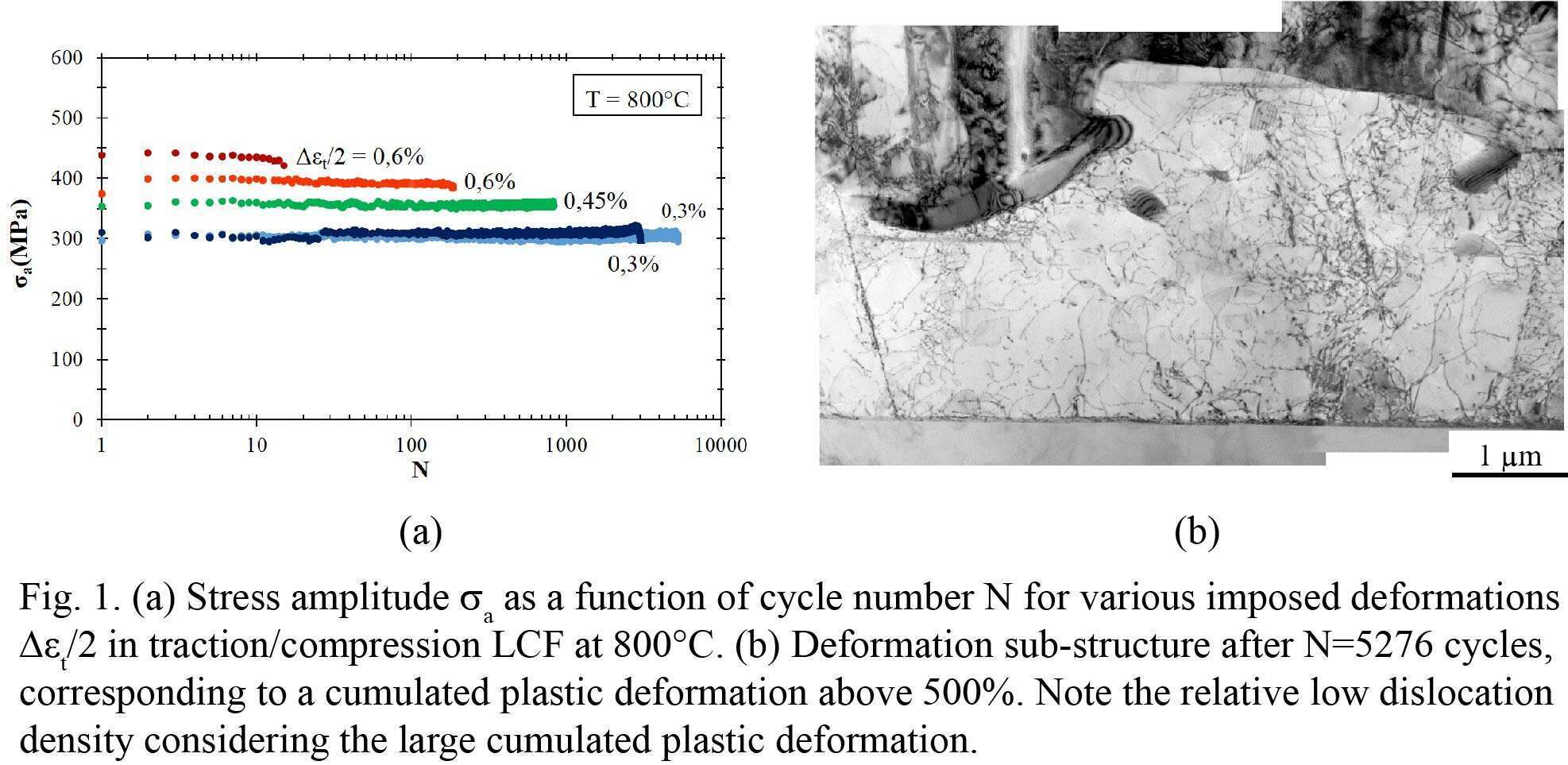
Dislocation mechanisms in TiAl during low cycle fatigue at 800°C investigated by TEM
2ISAE, SUPAERO, Toulouse
TiAl alloy are promising materials for applications in aeronautical and automotive motors, in reason of their high specific mechanical resistance at high temperatures. However, the behavior of these materials in fatigue, which is an important solicitation mode in service, has principally been explored at the macroscopic scale. Consequently, the elementary dislocation mechanisms remain poorly understood. Here, these mechanisms have been studied for low cycle fatigue (LCF) in traction/compression around 800°C, which are the expected conditions in industrial applications.
The fatigue tests show a remarkably stable behavior (Fig. 1a), without noticeable hardening or softening, a feature which is technologically interesting. Moreover, despite very elevated cumulated plastic deformations (above 500 %), the observed dislocation densities are relatively low (Fig. 1b). Using fine analyses of the dislocation mechanisms by transmission electron microscopy (TEM), these two surprising results are interpreted by a large reversibility of the dislocation motion during the traction and compression steps of the fatigue tests. The probable reason for this reversibility could be the active annihilation by climb of the cross slip loops generated by the numerous forth and back movements of the dislocations, which would thus avoid dislocation multiplication by interactions with the loops. This would then lead to the observed interesting stability of the mechanical properties.


Powered by Eventact EMS